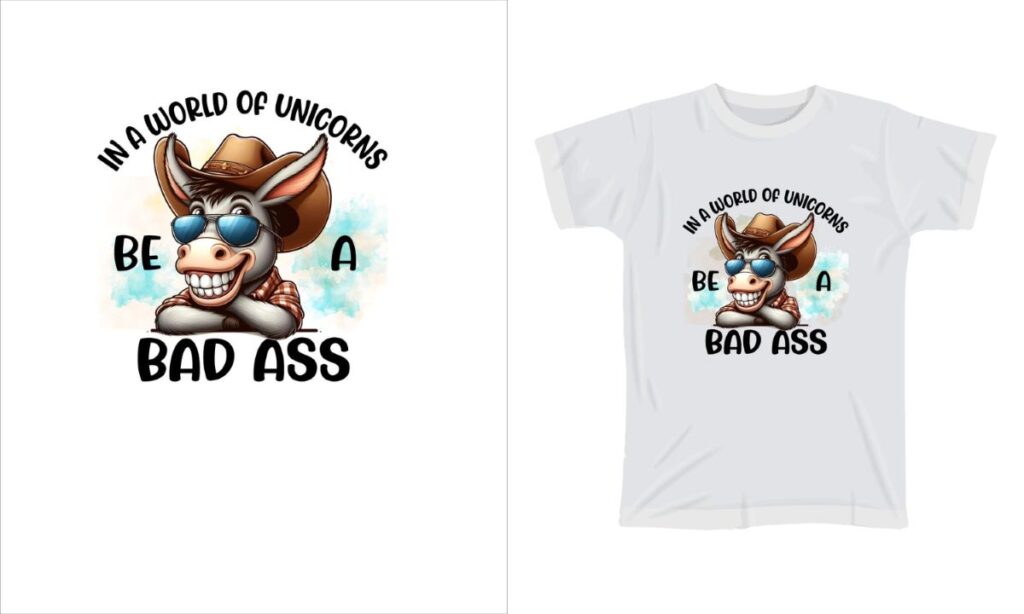The cost-effectiveness of UV DTF is transforming the landscape of modern printing by offering a competitive edge over traditional printing methods. As businesses strive to optimize their budgets while maintaining exceptional quality, UV Direct to Film (DTF) printing stands out due to its unique attributes. This innovative technology utilizes ultraviolet light to cure the ink instantly, significantly reducing drying times and enhancing productivity. By analyzing the printing cost comparison between UV DTF and conventional techniques like screen printing or offset printing, it becomes evident that UV DTF can lead to substantial long-term savings. Coupled with impressive durability of UV prints and the demand reflected in current market trends in printing, investing in UV DTF technology is increasingly seen as a strategic choice for forward-thinking businesses.
As the printing industry evolves, many alternatives to traditional printing techniques are gaining traction, especially methods like ultraviolet Direct to Film (DTF) printing. This modern approach not only streamlines production and minimizes operational costs but also boasts remarkable quality and longevity in printed materials. Businesses seeking effective printing solutions often find themselves weighing the benefits of UV DTF against more conventional practices like screen or offset printing. By leveraging the strengths of this cutting-edge technology, companies can enhance their output while addressing pressing concerns around durability, versatility, and cost management. In essence, the burgeoning popularity of UV DTF reflects a pivotal shift towards more efficient and sustainable printing practices.
Understanding UV DTF Printing: A Modern Approach
UV DTF, or UV Direct to Film printing, represents a groundbreaking advancement in the printing industry, merging precision and versatility. This technology utilizes ultraviolet light to cure ink instantly upon application, which allows for vibrant and intricate designs on a wide array of materials. Unlike traditional methods, which can be constrained by drying times and substrate limitations, UV DTF opens new doors for creatives and businesses alike, facilitating quick turnarounds and diverse printing solutions.
Moreover, as businesses increasingly prioritize efficiency and quality, UV DTF stands out as a compelling choice. It eliminates the need for multiple screens and setups typically required in methods like screen printing. This adaptability not only streamlines production but also empowers businesses to cater to diverse market demands, making it a significant player in modern printing trends.
Cost-Effectiveness of UV DTF vs. Traditional Printing Methods
In the realm of printing, cost-effectiveness is paramount. The initial investment for UV DTF printing equipment might be higher compared to traditional printing techniques, but an in-depth analysis reveals that this upfront cost can translate into long-term savings. Traditional methods often incur escalating costs due to the need for various inks and additional equipment, especially when dealing with multiple substrates. Conversely, the efficiency of UV DTF, which accommodates a range of materials without constant setup changes, often leads to reduced expenses over time.
Additionally, when evaluating printing costs, it’s vital to consider not just the expense of machinery, but also material consumption and waste. UV DTF printing technologies minimize material waste significantly, enhancing overall cost-efficiency. The ability to produce quality prints with fewer errors means businesses avoid the costs associated with rejects and reprints common in traditional processes, making UV DTF a judicious choice for optimizing financial resources.
Equipment and Maintenance: An Overview
When considering printing technology, the equipment involved plays a significant role in determining the operational feasibility of a business. UV DTF printers come equipped with advanced technology designed for high-speed production runs and impeccable print quality. Despite requiring a more substantial capital investment, the benefits of lower maintenance costs and fewer required materials can result in better long-term returns.
Traditional printing methods, such as offset or screen printing, might seem more economical at the onset but often entail hidden costs related to equipment upkeep and costly downtime from repairs. Moreover, the versatility of UV DTF printers means that they can handle various substrates, reducing the need for multiple machines, which can be a financial burden in the long run.
Material Usage and Waste Reduction
Material efficiency is crucial in assessing any printing technology. Traditional printing methods often experience higher material costs due to the need for separate inks and numerous setups for different materials. Every misprint or defective item translates into material wastage, which can inflate project costs significantly.
In contrast, UV DTF printing minimizes waste by allowing for precise direct printing onto materials without the necessity for costly adjustments. Its ability to quickly adapt to different substrates without changing inks leads to less inventory waste and enhances production efficiency, making it a sustainable choice for businesses aiming to reduce their operational costs and environmental footprint.
Labor Efficiency: A Significant Savings
Labor costs constitute one of the most significant expenses in any printing operation. Traditional printing methods are often labor-intensive, requiring multiple manual processes that increase the time and cost per job. Tasks such as setting up screens, mixing inks, and manual handling can spiral into increased operational costs.
Alternatively, UV DTF technology automates many of these processes, resulting in higher production rates with less human intervention. This automation not only reduces labor expenses but also allows for faster order turnaround, enabling businesses to scale up and accommodate a larger clientele without needing to significantly increase their workforce.
Durability and Quality of UV DTF Prints
When it comes to durability, UV DTF printing has proven to be a game-changer, producing superior quality prints resistant to fading, scratching, and environmental damage. This resilience not only ensures that the products maintain their aesthetic appeal over time but also diminishes the likelihood of returns due to quality issues, thereby enhancing customer satisfaction.
The high-quality outputs associated with UV DTF can lead to increased repeat business as satisfied customers are more likely to return. In a market where customer loyalty can significantly affect profitability, investing in durable printing technology like UV DTF could ultimately translate to stronger profit margins for businesses striving to keep up with evolving market demands.
Frequently Asked Questions
What are the primary cost advantages of UV DTF printing compared to traditional printing methods?
UV DTF printing offers significant cost advantages over traditional printing methods, particularly in material usage and labor efficiency. Unlike traditional processes that require different setups and inks for each substrate, UV DTF can print on various materials without changing inks, effectively lowering material costs and minimizing waste. Additionally, the automation in UV DTF reduces labor requirements, leading to lower overall labor costs and increased production rates.
How does the durability of UV prints impact the cost-effectiveness of UV DTF?
The durability of UV prints significantly enhances the cost-effectiveness of UV DTF printing. UV prints resist fading, scratches, and environmental damage, reducing the likelihood of returns and replacements. This longevity results in lower replacement costs, higher customer satisfaction, and the potential for increased repeat business, ultimately enhancing profitability for companies utilizing UV DTF technology.
In terms of printing cost comparison, how does UV DTF stack up against traditional methods?
When comparing printing costs, UV DTF tends to be more cost-effective than traditional methods, especially when considering operational efficiencies and reduced material waste. Traditional printing often incurs higher costs due to multiple setups for different substrates, while UV DTF’s versatility allows for a streamlined process that minimizes both labor and material expenses.
What market trends indicate the rising popularity of UV DTF over traditional printing methods?
Recent market trends show a growing preference for UV DTF printing as businesses seek high-quality, customizable prints with lower production costs. The demand for durable and vibrant printed products has led many companies to adopt UV DTF technology, which not only meets these needs but also enhances profit margins by reducing waste and improving production efficiency.
How do environmental considerations influence the cost-effectiveness of UV DTF compared to traditional printing methods?
Environmental considerations play a crucial role in the cost-effectiveness of UV DTF. Traditional printing methods often release harmful VOCs, impacting health and requiring costly environmental compliance. UV DTF uses eco-friendly inks that generate fewer VOCs, promoting a healthier work environment and appealing to environmentally-conscious consumers. This sustainability aspect can also enhance brand value and attract more customers.
Is the higher initial investment in UV DTF technology justified by long-term savings?
Yes, the higher initial investment in UV DTF technology is often justified by long-term savings. While UV DTF printers may have a steeper upfront cost, the reduced material waste, lower labor expenses, and increased durability of prints lead to significant savings over time. Many businesses find that these factors not only offset the initial costs but also improve overall profitability.
| Aspect | UV DTF Printing | Traditional Printing Methods |
|---|---|---|
| Equipment Costs | Higher initial investment but offers flexibility across various materials. | Lower initial costs, but requires multiple setups for different substrates. |
| Material Costs | Reduced costs due to versatile printing on various substrates without changing setups. | Higher costs associated with separate inks and inventory management. |
| Labor Costs | Streamlined and automated process, reducing labor costs and increasing output. | Involves manual labor and multiple steps, leading to higher costs. |
| Durability and Quality | Superior durability resistant to scratches and fading, leading to higher customer satisfaction. | Quality can degrade, leading to replacement costs and dissatisfied customers. |
| Environmental Impact | Generates fewer VOCs, making it more environmentally friendly. | Typically uses solvents that release VOCs, impacting health and environment. |
Summary
The cost-effectiveness of UV DTF is increasingly recognized in the printing industry, as it allows businesses to achieve superior output quality while optimizing operational costs. Although the initial investment for UV DTF printers may be higher, the long-term savings in material efficiency and labor costs, combined with the enhanced durability and aesthetic appeal of products, often justify the expense. Furthermore, the environmental advantages of using UV DTF technology align with contemporary consumer preferences for sustainable practices. Therefore, businesses looking to maximize profitability and meet market demands should strongly consider adopting UV DTF printing as a cost-effective alternative to traditional methods.



